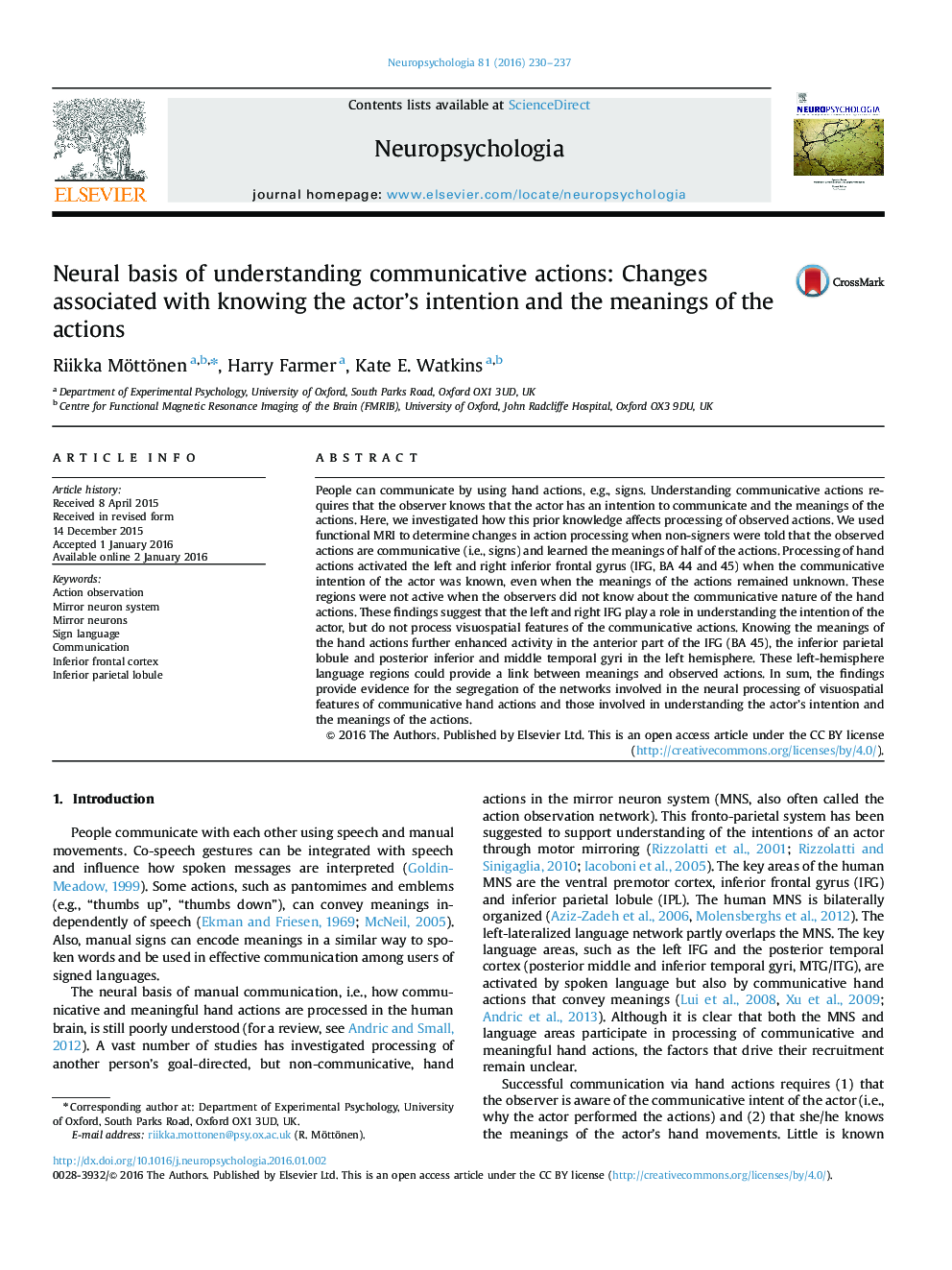| Article ID | Journal | Published Year | Pages | File Type |
|---|---|---|---|---|
| 7319508 | Neuropsychologia | 2016 | 8 Pages |
Abstract
People can communicate by using hand actions, e.g., signs. Understanding communicative actions requires that the observer knows that the actor has an intention to communicate and the meanings of the actions. Here, we investigated how this prior knowledge affects processing of observed actions. We used functional MRI to determine changes in action processing when non-signers were told that the observed actions are communicative (i.e., signs) and learned the meanings of half of the actions. Processing of hand actions activated the left and right inferior frontal gyrus (IFG, BA 44 and 45) when the communicative intention of the actor was known, even when the meanings of the actions remained unknown. These regions were not active when the observers did not know about the communicative nature of the hand actions. These findings suggest that the left and right IFG play a role in understanding the intention of the actor, but do not process visuospatial features of the communicative actions. Knowing the meanings of the hand actions further enhanced activity in the anterior part of the IFG (BA 45), the inferior parietal lobule and posterior inferior and middle temporal gyri in the left hemisphere. These left-hemisphere language regions could provide a link between meanings and observed actions. In sum, the findings provide evidence for the segregation of the networks involved in the neural processing of visuospatial features of communicative hand actions and those involved in understanding the actor's intention and the meanings of the actions.
Keywords
Related Topics
Life Sciences
Neuroscience
Behavioral Neuroscience
Authors
Riikka Möttönen, Harry Farmer, Kate E. Watkins,
